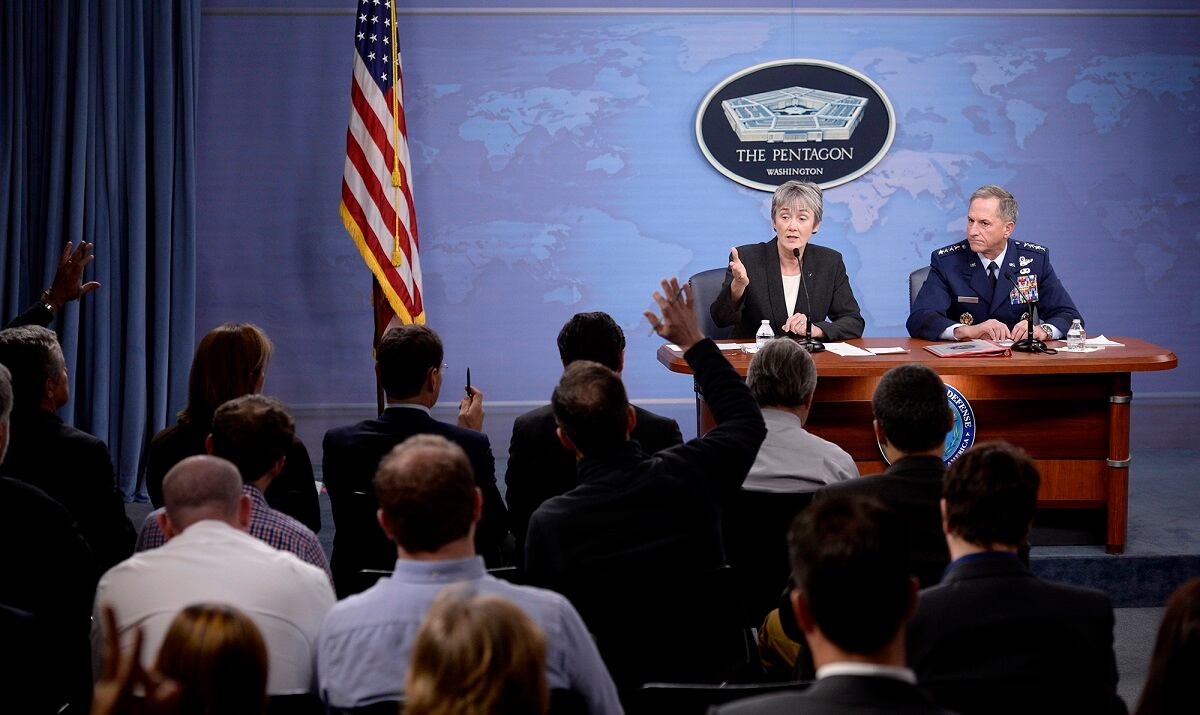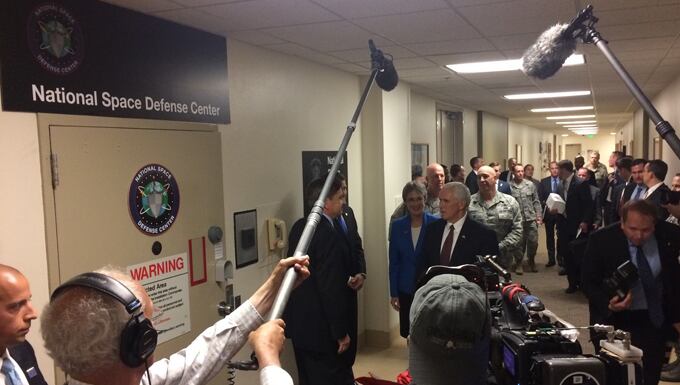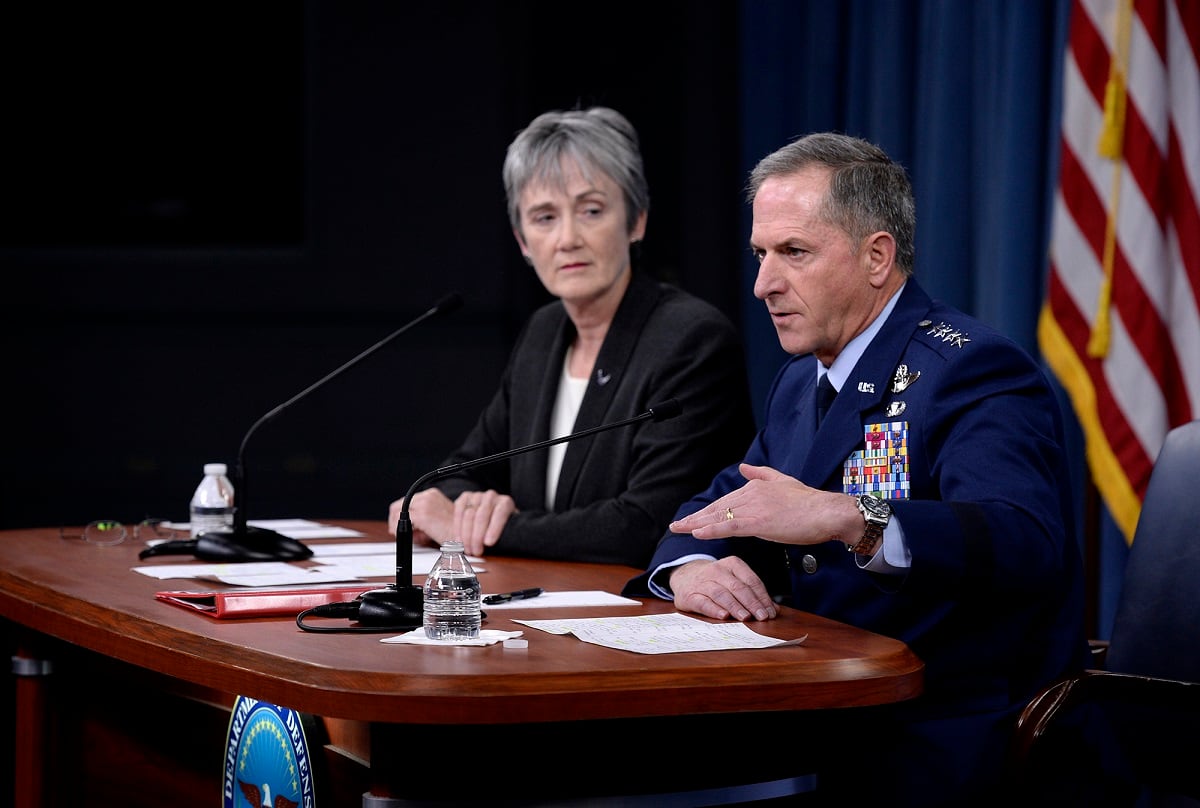The Air Force plans to train its public affairs officers to adopt a “think like the enemy” mindset when deciding what information to release to the public under new secrecy rules, according to training slides leaked online.
The slides, posted on the unofficial Air Force amn/nco/snco Facebook page, describe a massive training effort and “cultural change” for everyone from basic trainees to senior leaders.
In a March 1 memo first reported by Defense News, a sister publication to Air Force Times, the Air Force said the change and its increased focus on operational security is motivated by “the re-emergence of great power competition.”
The new public affairs guidance raised alarms from free press advocates and some former Air Force officials, who warned it could lead to a chilling effect limiting the public’s ability to know what the military is doing.
Military Reporters and Editors released a statement Tuesday expressing its concerns, and warning that the ambiguous nature of the guidance could prompt officials to “err on the side of withholding information.”
“We respect the need for operational security,” said John Donnelly, president of MRE and a reporter with Congressional Quarterly and Roll Call. “That’s why there is classified information. We understand, too, that sometimes even unclassified information can convey important details to an enemy. But security must be balanced against the need to inform the public. … In a worse-case scenario, such guidance could be used to justify keeping out of public view data that may simply be embarrassing to the Air Force but that the U.S. citizenry needs to know.”
Briefing materials dated Feb. 28 note that “the information we communicate publicly is consumed, analyzed, and acted upon by our would-be adversaries. We must take a careful look at our information so we don’t provide our adversaries a competitive advantage they may use against us.”
“In the information age, we must be aware no information is local and any information released may find its way on to international platforms,” the slides said, noting that adversaries could try to gain information through public speaking engagements, slides, written reports and academic papers, news releases and interviews, and social media sites.
Public affairs and subject matter experts should check for potential OPSEC violations before media interviews, public speaking engagements, or the release of written materials, the Feb. 28 slides said.
Air Force public affairs officials at the Pentagon will train major command PAOs, who will then train wing PAOs about OPSEC considerations and the “think like the enemy” mindset, the slides said.
OPSEC training will be developed and made part of the usual accessions process, the slides said, as well as professional military education, and will be reinforced at the unit level.
The Feb. 28 slides note “this is a shift in the recent Air Force narrative.”
RELATED

A section on “Recent Failures to Protect OPSEC” notes three recent stories in which Air Force officials were deemed to have released too much sensitive information. A Dec. 6 Fox News story, “US Air Force bombers needed to send message to North Korea come up short,” discussed maintenance problems that kept one of two B-1B Lancer bombers from flying on a continuous bomber presence sortie to deter North Korea. The Air Force said this story, which quoted an unnamed officer, was an unauthorized release of operational information about the sortie, and how much time the Lancer had to meet up with a tanker.
The consequences of this story could be a “failure to reassure allies of [Air Force] capabilities” and “adversaries miscalculate our capabilities, readiness.”
Another slide said a remotely piloted aircraft unit at McConnell Air Force Base in Kansas “released detailed information about the targeting process and considerations within the kill chain” in a Guardian story, “The kill chain: Inside the unit that tracks targets for US drone wars.”
The National Space Defense Center at Schriever Air Force Base in Colorado was identified “as a hub of critical data” in a Feb. 19 Colorado Springs Gazette story, reposted by the Denver Post, according to the slide presentation. In the process, the Air Force “inadvertently identified a national center of gravity to adversaries.”
Gazette reporter Tom Roeder, who wrote that story, said in a tweet that a public affairs officer was sitting in on his interview with the center’s director.
“Why something that’s been public for three years prompted this is baffling,” Roeder tweeted.
Vice President Mike Pence, accompanied by Air Force Secretary Heather Wilson, also visited the National Space Defense Center on June 23. Photographs of that visit were publicized on Air Force Space Command’s website.

The slides warned against the release of information related to current operations, readiness or posture for future operations, vulnerabilities affecting unit readiness or operations involving other countries, or details on the number, location and capabilities of operational assets.
The Air Force is also warning against detailing the sequence of events in operational or training exercises, including major training exercises like Red or Green Flag.
Classified or sensitive details on issues such as presence, capability, strength, readiness, arrival or departure times, location, methods, movements, or tactics, techniques and procedures that could be “of potential benefit to adversaries” were listed as examples of other critical information that should not be released.
“It is our job to make information available to the public, but we must do it smartly from the beginning!” according to the slide.
Stephen Losey is the air warfare reporter for Defense News. He previously covered leadership and personnel issues at Air Force Times, and the Pentagon, special operations and air warfare at Military.com. He has traveled to the Middle East to cover U.S. Air Force operations.




